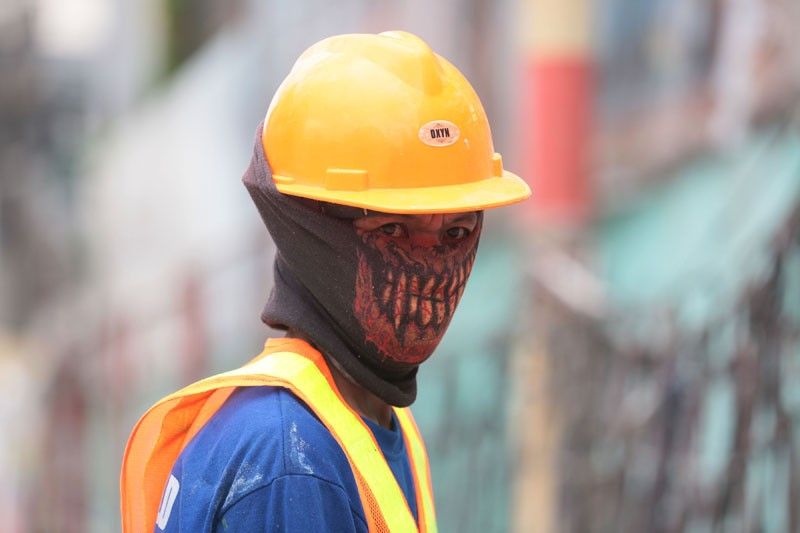Commentary: Another Labor Day in a pandemic

On May 1, 1903, thousands of workers, under the Union Obrero Democratica de Filipinas (UODF), organized and marched from Plaza Moriones in Tondo to Malacañang to demand fairer working conditions. Over a century later, the Philippines continues to celebrate the day to commemorate hard-working Filipinos.
This year, however, for millions of Filipino families, there is little to celebrate.
Due to the continuing lockdown in parts of the country, many continue to face economic hardship. Without a doubt, the availability of jobs, improving income and controlling the price of goods are top-of-mind concerns for many.
According to the Philippine Statistics Authority’s (PSA) labor force survey, the country’s unemployment rate was up to 8.8% in February this year, translating to 4.2 million jobless Filipinos. The PSA survey also found that 7.9 million Filipinos took less money home than usual due to pay cuts from shorter working hours.
According to the Social Weather Stations (SWS), the level of adult joblessness in the country is even higher. Standing at 27.3%, this translates into 12.7 million unemployed Filipinos based on their November 2020 survey.
The SWS survey further found that 16% of Filipino families, or around 4.0 million families, experienced involuntary hunger. The increased hardship faced by Filipinos is further reflected by the 62% of adult Filipinos who said that the quality of life had gone down over the past year.
Perhaps the best illustration of Filipinos' continuing economic struggle is the number of people that fall in line each day at the “community pantries” that have mushroomed across the country.
The popularity of these grassroots food banks that provide food packs and household items for free to community members emphasizes just how many of our countrymen and women lack the essentials needed to make it through a day.
At the same time, these voluntary acts of setting up these pantries also highlight the true spirit of “Bayanihan” and our sense of community while simultaneously underscoring the shortcomings of the Philippine government’s pandemic response.
Sure, in honor of Labor Day, the Philippine government has announced that 5,000 minimum wage earners and overseas Filipino workers (OFWs) will be given COVID-19 vaccines during a “symbolic inoculation ceremony” on May 1.
However, with the number of COVID-19 cases in the country recently surging past the one million mark and with thousands more infected each day, “symbolic” vaccination just won’t cut it when a sustained vaccination rollout is what is really needed.
At the rate it is going, however, the government’s vaccination plan may not be fast enough. It should explore collaborations with the private sector to improve its COVID-19 response efforts.
For instance, the government should partner with the technology industry to leverage A.I. and cloud platforms to manage vaccine appointment bookings, databases, tracking vaccine doses, and post-vaccine management needs. Furthermore, from the cold-chains for vaccine transport to the creation of pop-up COVID-19 vaccination clinics, public-private collaboration can also be tapped to assist with a nationwide rollout’s logistical requirements.
Moreover, in addition to a more aggressive inoculation program, the government should also address an issue far too many Filipino workers face daily— transportation.
Despite the continuing state of Modified Enhanced Community Quarantine (MECQ) in many parts of the country, many Filipinos working in essential industries still have to travel to work each day.
However, since 88% of Metro Manila households do not own a single car, the majority have no other choice but to take public transportation, regardless of the higher risk of exposure to COVID-19. Given the reduced capacity of public transport, the government should provide the commuting public with more alternative transportation options, including better biking and pedestrian lanes to improve mobility.
Furthermore, the government should also provide clearer plans moving forward. The decision of many businesses to continue operating depends, in large part, on the government’s COVID-19 rules and restrictions.
For many businesses, especially small and medium enterprises that employ 65% of the workforce, the predictability and clarity of the government’s plans spell the difference between keeping the lights on or closing up shop.
For those of us who can work from home, Labor Day is perhaps a reminder for us to appreciate how fortunate we are to work from the safety of our homes during this pandemic. And yes, there is much to appreciate despite studies showing that working-from-home has led to workdays becoming three hours longer—an irony, given the history of Labor Day in the U.S. that traces its origins back to the eight-hour workday movement.
So on this day, we recognize the critical role that our workforce has in the country’s economy and how now, more than ever, are concrete actions and programs needed to hasten economic recovery. For those working from home, neither should we forget that Labor Day is a celebration of the value of the work we do, regardless of where it is done.
Paco Pangalangan is the executive director of think tank Stratbase ADR Institute.
- Latest




























